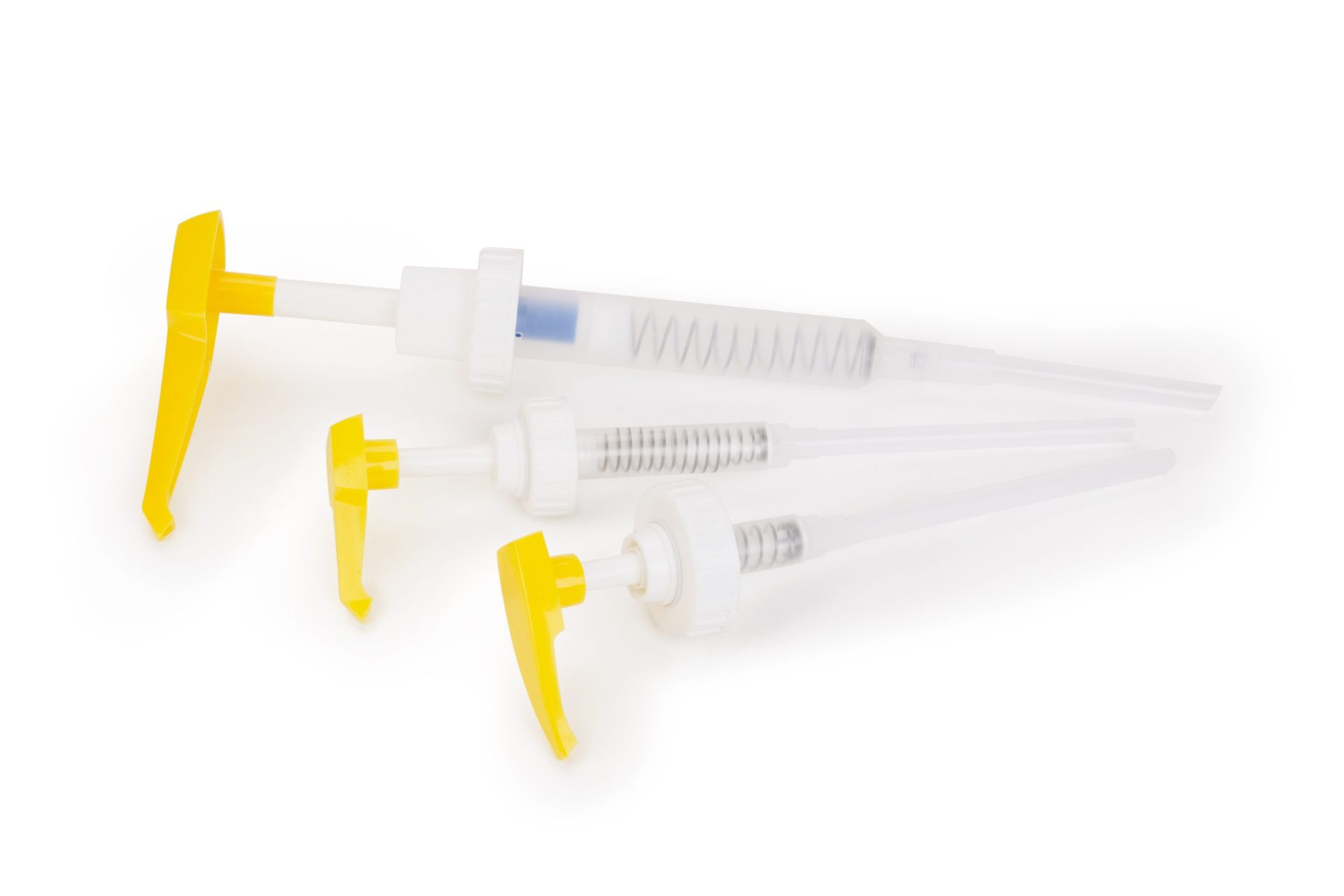
by Jim Derck—GBI Technical Advisor
When using WEST SYSTEM® 300 Mini Pumps, the most important things to remember are:
- Read the instructions.
- Use one full pumps stroke of resin for each one full pump stroke of hardener to get the proper resin-to-hardener ratio.
If you’re ever concerned that your pumps aren’t metering properly, simply mix a test batch of 3 pump strokes each of resin and hardener. Stir thoroughly and make sure it’s fully cured before continuing with your project.
Many WEST SYSTEM® Epoxy users take their new mini-pumps out of the bag, mount them on the resin and hardener cans, and begin dispensing and mixing epoxy, without ever having read the instructions. Most use them for years without a problem. Of those who do experience a problem, we’ve found that it most often could have been prevented by—you saw this coming—reading the instructions. The instructions offer simple steps that you can take to help assure that every batch of epoxy you apply to your project will cure properly and reach its maximum strength.
The ratio of each pair of pumps is controlled by the installation of a clip, that limits the stroke (and volume) of one or both of the pumps. All pumps are carefully inspected during this operation and during packaging. But the final test of a pump’s performance can’t be made until it is actually pumping resin or hardener, a test we can’t perform and still keep pumps affordable. The ratio verification test described in the instructions confirms that both pumps are dispensing the correct volume and that the ratio of resin to hardener is within a critical narrow range.
The ratio of resin to hardener is crucial to epoxy performance. Depending on the hardener you select, WEST SYSTEM Epoxy is mixed at a ratio of five parts resin to one part hardener, or three parts resin to one part hardener. At the proper mix ratio, the number of chemically reactive sites in the resin balances the number of reactive sites in the hardener. The resin molecules are larger than the hardener molecules, and have few reactive sites, hence the 5:1 or 3:1 ratio. When the mix is stirred thoroughly, the resin and hardener molecules react to develop full strength. If the mix contains excess hardener, hardener molecules will remain unreacted in the cured epoxy, weakening it. They can also prevent subsequent paint coatings from setting up. Never add extra hardener in attempt to alter cure speed.
Before installing new Mini Pumps, the tighten the white knurled nut holding the cap onto the pump body. Tighten it whenever the pump body becomes loose. After priming the pumps, be sure the pump heads are returning to the top after each stroke. When you are sure the pumps are dispensing the correct ratio, you can make a template to slide between the pump head and top of the cap, to record the pump’s stroke travel distance. You can use the template to occasionally monitor changes in the pumps’ strokes.
Pumps may lose their prime, especially if they have been sitting inactive for a time. Before using the pumps, determine if the pump has partially lost its prime by pushing down on the head with slight pressure. If you feel some resistance and a drop forms at the spout, the pump is primed. If not, keep pushing down slowly until you feel resistance, and a drop forms at the spout. Release the pump and allow it to rise. Pull the pump up to make sure it has returned to the top. Repeat this until until a you feel resistance and a drop forms at the top of the stroke. It should now be primed and ready to dispense a steady stream of resin or hardener.
If a new pump will not prime properly, there is little you can do except call us for a replacement. If an older pump is acting up, it may help to clean it. To clean a hardener pump, begin by pumping warm water (with a small amount of detergent) through it to flush out the hardener. Then invert the pump in a bucket, cover with water and let it soak overnight. Pump the water out. To push out any remaining water, pump a stroke of hardener through and discard the hardener.
You can get away with using faulty pumps to dispense the resin and hardener, so long as you rely on other means of measuring the ratio. Until you get new pumps, you may measure larger quantities by volume. To do this, mark a stick with six equally spaced lines for the 5:1 mix ratio, or four equally spaced lines for the 3:1 ratio. Place the stick in a straight, parallel sided container. Always add the resin first because it is will be easier to see the space between the top two lines for the hardener.
Pumps sometimes spit air. A small air bubble shouldn’t throw the ratio off enough to cause a problem. If you think a bubble was large enough to throw off the ratio, you can compensate with a little adjustment stroke at the end. Use your best judgment and remember, you are better off with a little extra resin than a little extra hardener. Spitting is more common in cooler temperatures when the resin and hardener’s viscosity is greater. Pump slow and steady in cool temperatures, or better yet, warm the resin and hardener to reduce the viscosity.
Sometimes accumulated shop dirt or debris may prevent Mini Pumps from venting properly. The pressure that results from temperature changes can then cause the resin or hardener to come out of the pump spout. To prevent this problem, punch a small hole in the top of the container.





